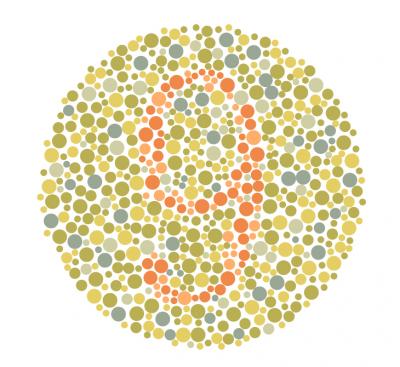Having color vision deficiency (also called color blindness) means you can’t see certain colors the way most people do — or you may not see color at all.
If color vision deficiency runs in your family, or if you think you or your child may have color vision deficiency, talk to your eye doctor. They can give you or your child a simple vision test to check for color vision deficiency.
Your eye doctor can tell if you have color vision deficiency using a test called the color plate test. If the results aren’t clear, your eye doctor may do other tests. You won’t have to wait for your test results — your eye doctor will be able to tell you if you have color vision deficiency as soon as you take the tests.
Color plate test
This is the most common type of color vision deficiency test. During this test, your eye doctor will ask you to look at a circle made of many different colored dots. Inside the circle is a shape that’s also made of dots — like a number, a letter, or a squiggly line. If the shape blends into the background and you can’t see it, you may have a type of color vision deficiency. Different color plates can check for different types of color vision deficiency.

Anomaloscope test
This test checks if you can match the brightness of 2 lights. During this test, you’ll look through an eyepiece at 2 lights that have different levels of brightness. You’ll use knobs to adjust the lights and try to get them to match. If you can’t match the brightness of the 2 lights, you may have color vision deficiency.

Hue test
In a hue test, you’ll get blocks that are different colors. Your eye doctor will ask you to arrange them in rainbow order — from red to purple. If you have trouble putting them in the correct order, you may have a type of color vision deficiency. Eye doctors often use this test for people who need to have very accurate color vision for their jobs — like graphic designers.
